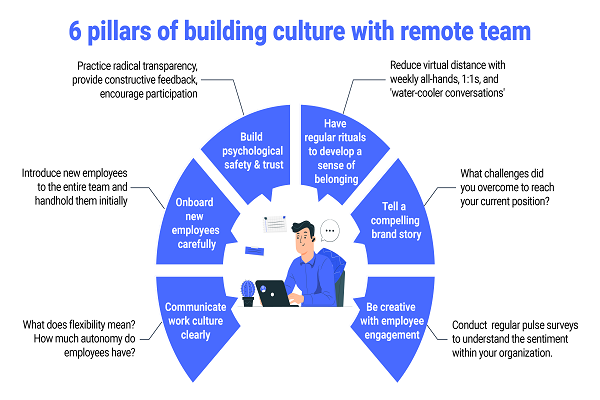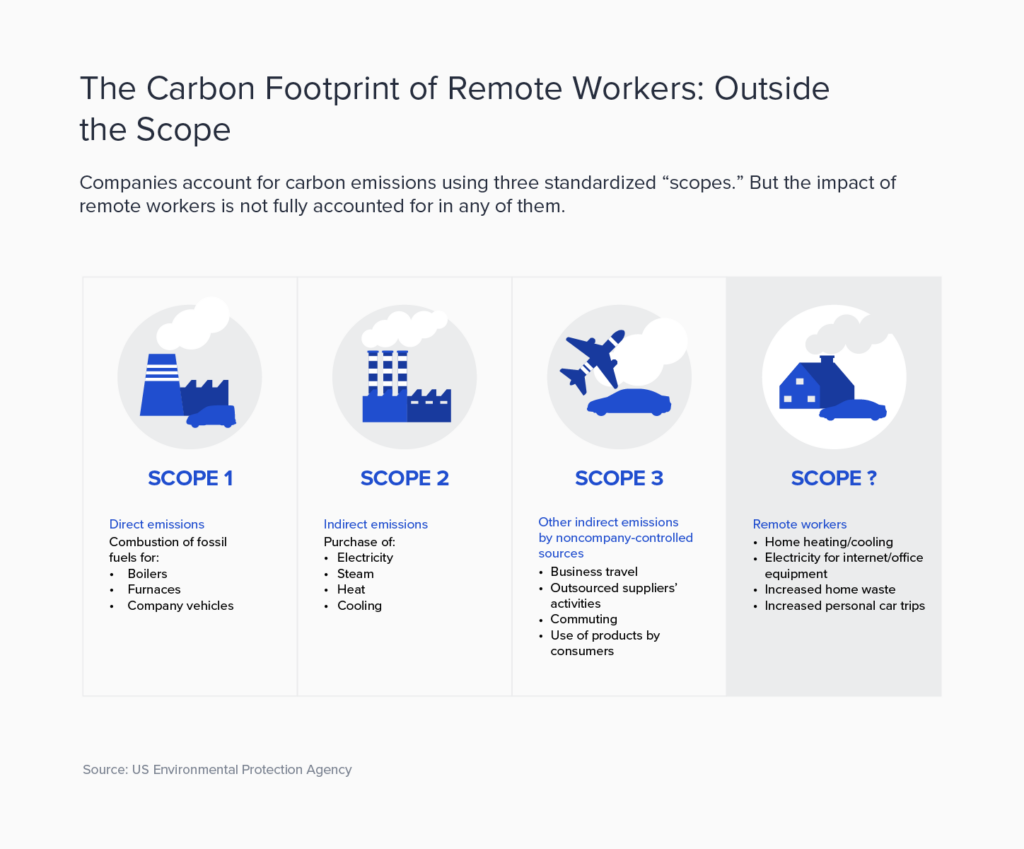Spending too much on recruitment, payroll or global HR?
We help you find the Best Providers at the lowest cost.
In recent years, the rise of remote work has transformed the landscape of talent acquisition. Companies are adjusting their hiring strategies to attract top remote talent in order to stay competitive and meet the demands of a global workforce. By tapping into a wider pool of potential candidates, organizations have the opportunity to hire the most qualified and talented individuals, regardless of their geographical location.
Key Takeaways
- Remote work has led to a shift in talent acquisition, expanding the candidate pool across geographical boundaries
- Building a strong employer brand and fostering effective communication strategies are essential for attracting top remote talent
- Tailored hiring practices for remote employees can help companies maximize their reach and appeal to the most qualified candidates.
Attracting remote talent requires a different approach than traditional hiring methods. Organizations must focus on building a strong employer brand, fostering effective communication strategies, and designing hiring practices tailored to remote employees. By doing so, companies can not only attract highly-skilled professionals but also maximize their reach to the most qualified candidates.
Changing Landscape of Talent Acquisition
Emergence of Remote Work Due to Pandemic
The COVID-19 pandemic has greatly impacted the global workforce, leading to a significant rise in remote work as companies adapted to health and safety guidelines. This shift in work arrangements has forced organizations to rethink their talent acquisition strategies and explore new possibilities in the job market.
As remote work became more prevalent, companies were challenged to efficiently hire and onboard remote workers. The pandemic has leveled the playing field for job seekers, allowing them to apply for positions regardless of location, while employers benefit from a larger and more diverse talent pool.
Understanding the Remote Labor Market
To successfully navigate the remote labor market, hiring managers must be aware of the evolving preferences of job seekers. Job seekers are now placing more importance on flexibility, work-life balance, and a sense of purpose in their roles. Companies need to adapt their recruitment efforts to be more inclusive and appealing to this growing segment of the workforce.
Some of the key steps to understanding and tapping into the remote labor market include:
- Leveraging technology: Employing digital tools for virtual interviews, assessments, and onboarding processes to efficiently manage the hiring process for remote workers.
- Emphasizing communication and collaboration: Ensuring that remote workers are provided with the necessary resources and mechanisms to effectively communicate and collaborate with their colleagues.
- Creating a supportive remote work culture: Fostering an environment that promotes inclusivity, employee wellbeing, and engagement among remote workers.
By staying agile and adapting to the changing landscape of talent acquisition, companies can successfully attract and retain top talent in the new era of remote work.
Building a Strong Employer Brand
Establishing Company Culture for Remote Work
A strong employer brand is crucial for attracting top remote talent, and a significant aspect is establishing a remote work culture. Developing an inclusive and engaging company culture is vital to ensuring remote employees feel connected and valued within the organization.
Leadership should lead by example and demonstrate a commitment to inclusivity. Here are some steps to take while creating an inclusive remote work culture:
- Regularly communicate via Slack or Zoom, ensuring that remote employees get the chance to voice their thoughts and concerns.
- Host virtual team-building events to foster camaraderie and connection among staff.
- Offer inclusive office perks, such as access to wellness programs, professional development opportunities, and mentorship for remote employees.
As remote work requires flexibility, providing flexible work hours and a reliable infrastructure should be a priority. Equip remote employees with essential tools, technology, and resources to ensure a seamless, productive work experience.

Promoting Work-Life Balance
Maintaining a healthy work-life balance is a valued aspect of a company’s employer brand. Promoting work-life balance fosters employee loyalty and satisfaction.
In the remote work context, organizations can support work-life balance by:
- Allowing employees to set their work hours: Providing options that accommodate personal obligations, such as childcare or eldercare needs, can significantly help reduce stress.
- Encouraging regular breaks: Establish an environment that promotes mental and physical well-being. Encourage employees to take periodic breaks for self-care or brisk walks.
- Implementing boundary-setting policies: Clearly define work expectations and discourage excessive working hours for remote employees. This can help prevent burnout and protect employees’ mental health.
Remember, integrating work-life balance and flexibility into an employer brand will greatly contribute to attracting and retaining top remote talent while fostering a satisfied and dedicated workforce.
Effective Communication Strategies
Role of Technology in Communication
Effective communication plays a pivotal role in attracting and retaining top remote talent. By leveraging the right tools and technologies, organizations can ensure their remote employees stay engaged and connected. Using collaboration software like Slack or Teams can help mimic the in-person office experience, allowing employees to send messages, share ideas, and work together on projects.
Remote work tools and communication channels should be chosen wisely. Opting for video conferencing solutions such as Zoom or Microsoft Teams can provide the much-needed face-to-face communication that is vital for remote workers. Additionally, having a dedicated channel for non-work communication allows employees to bond over social conversations, fostering a sense of community in remote teams.
The Value of Transparency
Transparent communication is essential for building trust and boosting employee morale in a remote working environment. To ensure transparency, organizations should establish clear communication norms and expectations, encourage open dialogue, and maintain frequent check-ins with team members.
Leaders should prioritize empathy and connection, actively listening to their team’s concerns and providing the necessary support. By being available and consistent, supervisors can make remote employees feel valued and connected. Encourage team members to over-communicate, as this can help bridge the gap created by the lack of physical interaction in remote settings.
Implementing effective communication strategies, harnessing relevant technology, and promoting transparency can enhance team cohesion, thereby attracting and retaining remote talent.
Hiring Practices for Remote Employees
As remote work becomes increasingly popular, it is essential for organizations to develop effective hiring practices that attract top talent and create a seamless employee experience.
Creating Comprehensive Job Descriptions
To attract the best candidates, crafting comprehensive job descriptions is vital. This allows potential employees to understand the expectations, responsibilities, and opportunities available to them. Job descriptions should include:
- Job title: Clearly state the designation and level of seniority.
- Role summary: Provide an overview of the position and its purpose in the organization.
- Key responsibilities: Describe the main duties and tasks that the employee will be responsible for.
- Qualifications and skills: List the required education, experience, certifications, and specific abilities needed for the role.
- Work location: Indicate whether the position is fully remote, partially remote, or location-specific.
- Benefits and compensation: Highlight any salary, bonus opportunities, and employee benefits that may entice potential candidates.
By providing clear and comprehensive job descriptions, you can attract well-suited candidates and streamline the remote hiring process.
Effective Onboarding Strategies
Onboarding plays a crucial role in the success of new remote employees. Implementing effective onboarding strategies ensures that they are well-prepared, engaged, and integrated into the company culture. Here are some strategies to consider:
- Pre-onboarding communication: Prior to the official start date, establish a line of communication with new remote hires. This may include sending a welcome email, providing necessary onboarding materials, or scheduling an introductory video call.
- Digital onboarding tools: Utilize online platforms and tools to efficiently deliver company policies, benefits, and other essential information.
- Virtual introductions: Organize team meetings or one-on-one calls to introduce the new hire to their colleagues and foster team cohesion.
- Remote mentorship programs: Pair new remote employees with experienced team members who can provide guidance, support, and insights as they navigate their new roles.
- Ongoing support: Regular check-ins and performance evaluations can help ensure that remote employees have the necessary resources to be successful and feel valued within the organization.
Utilizing these hiring and onboarding best practices for remote employees can ultimately contribute to a thriving work environment and a strong, diverse team.
Maximizing Reach to Potential Candidates
Leveraging Social Media Platforms
Using social media effectively is essential for employers looking to attract remote talent. By maintaining an active presence on platforms like LinkedIn, Twitter, and Facebook, companies can showcase their employer brand and engage with potential candidates directly. Sharing job openings, posting updates about company culture, and providing insights into the remote work experience can help make the organization more attractive to job seekers. This also encourages employees to share these updates with their own networks, amplifying the reach of the employer brand.
Understanding Role of Referrals and Job Boards
In addition to social media, companies must also consider the importance of referrals and job boards in attracting remote talent. Employee referrals can be an invaluable source of qualified candidates, as current employees often have strong professional networks and an understanding of the company’s culture. Encouraging and incentivizing employees to refer friends and colleagues can help bring in high-quality applicants who are already familiar with the organization.
Job boards also play a significant role in connecting job seekers with potential employers. Niche job boards focused on remote work can help organizations target a specific pool of remote candidates, while general job boards, such as Indeed or Glassdoor, are still essential for reaching a wider audience. Companies should also make sure their job postings are optimized for search engines, as many job seekers begin their search with a simple online query.
By implementing a multi-pronged approach to talent acquisition, employers can increase their chances of finding and attracting top remote candidates. Making use of social media, referrals, and job boards will help companies cast a wider net and ensure they are reaching the best remote talent available.
Offering Incentives to Attract Talent
When trying to attract top remote talent, focusing on the right incentives is crucial. Companies need to understand the most valuable perks and benefits that cater to the specific expectations of the remote workforce. Two strategic methods to accomplish this are by providing autonomy and leveraging employee testimonials.
Importance of Offering Autonomy
In a remote work environment, giving employees a sense of autonomy plays a vital role in their overall job satisfaction. By allowing team members the freedom to manage their work and schedules, companies can foster a positive work-life balance that is highly attractive for remote candidates. Emphasizing this flexibility and independence in job postings and interviews will give potential hires a clear view of the company’s commitment to supporting employee wellbeing.
Key aspects of autonomy include:
- Flexible working hours
- Options to choose preferred tools and technologies
- Clear targets and goals, followed by trust in employees to achieve them
Employee Testimonials as a Marketing Tool
Using employee testimonials is another effective strategy to attract remote talent. Authentic experiences shared by current team members can showcase your company’s culture and attractive incentives. By highlighting the benefits of working remotely, testimonials can paint a clear picture of your organization’s commitment to supporting remote employees.
Consider the following approaches for sharing employee testimonials:
- Create video interviews with current remote employees discussing their experiences and the perks they find most valuable
- Share blog posts or social media updates in which remote team members describe how the company’s policies and practices have positively impacted their lives
Remember, by offering autonomy and harnessing the power of employee testimonials, companies can create a more attractive environment for remote talent, helping to grow their employer brand and present a genuine, appealing view of their organization’s culture and values.
Measuring Employee Productivity
In the era of remote work, measuring employee productivity is paramount to ensure the success of a distributed workforce. Companies can utilize Key Performance Indicators (KPIs) to gauge remote employee productivity and performance based on their goals and objectives. Some KPIs that help in evaluating remote employees’ performance are task completion rate, hours worked, communication efficiency, and goal accomplishment.
Technology plays a crucial role in supporting remote work productivity and collaboration. Companies can introduce various software tools like project management platforms, time tracking applications, and communication tools, to streamline tasks and facilitate easy collaboration among team members. These tools not only enable remote workers to collaborate effectively but also provide managers with the necessary data to monitor their productivity and performance.
Work-life balance is another factor that influences employee productivity in remote settings. Eliminating long commutes and providing flexible work hours affords remote employees a greater work-life balance. Encouraging regular breaks, setting boundaries between work and personal time, and promoting the importance of mental health further enhances remote employees’ productivity and satisfaction.
It’s essential to maintain regular communication with remote employees to stay updated on their work progress and address any challenges they might face. Managers should schedule periodic check-ins, meetings, and feedback sessions to ensure that employees are engaged, motivated, and achieving their goals.
Measuring employee productivity in remote settings requires a combination of KPIs, utilizing technology, fostering work-life balance, and maintaining open communication. By adopting these strategies, companies can attract and retain top remote talent while enhancing overall productivity.
Reducing Carbon Footprint with Remote Work
The growing trend of remote work is proving to be beneficial not only for businesses and employees, but also for the environment. Working remotely can significantly reduce the carbon footprint of office employees, as it eliminates daily commutes and lowers energy consumption.
Remote work has a direct impact on reducing the carbon emissions produced by transportation. According to a study, remote workers can reduce their carbon footprint by 54% if they work from home four or more days a week. Even working remotely up to four days a week can reduce an individual’s carbon emissions by up to 29%.
Besides transportation, remote work also plays a role in lowering energy consumption within office spaces. By having fewer people in physical office locations, less energy is required for heating, cooling, and maintaining the facility. This reduction in energy usage contributes to a smaller overall carbon footprint.

In addition to its direct environmental benefits, remote work can also inspire companies to implement more sustainable practices throughout their operations. For instance, by relying on virtual communication tools and cloud-based document storage, businesses can minimize the use of paper, thereby conserving resources and reducing waste.
Companies embracing remote work are not only attracting top talent by promoting work-life balance and job satisfaction, but they are also demonstrating a commitment to the environment. This proactive approach in reducing their carbon footprint is becoming increasingly important for both employees and consumers who value sustainable business practices. Remote work, in turn, is a powerful tool for businesses to contribute to global environmental efforts while providing numerous benefits to their workforce.
Frequently Asked Questions
Employers can attract top remote talent by offering competitive salaries, flexible work schedules, and opportunities for professional growth. Showcasing a strong company culture and clear remote work policies also helps entice potential candidates. Providing work-life balance and emphasizing employee well-being can make the company an appealing choice for remote talent.
Essential benefits for remote positions include health insurance, retirement plans, and professional development opportunities. Additionally, providing remote employees with a stipend for home office equipment, internet, and utilities can make the position more attractive. Companies should consider offering mental health support and wellness initiatives, as remote work can sometimes be isolating and mentally taxing.
Effective recruitment strategies for remote workers include promoting job postings on remote job boards, leveraging social media, and networking in relevant industry communities. Companies can also partner with remote work-focused recruitment agencies and use employee referrals to find the right talent. Ensuring a clear and detailed job posting that highlights the remote work nature of the position is essential for attracting candidates.
To create an appealing remote work culture, companies should prioritize open communication, foster team collaboration, and encourage regular virtual check-ins and team meetings. Utilizing a variety of communication tools, such as video conferencing and instant messaging, helps to maintain connections between team members. Offering virtual team-building activities and creating opportunities for casual, non-work related interactions can bolster employee engagement and job satisfaction.
Onboarding remote employees can be facilitated with the help of video conferencing for orientation sessions, digital document systems for paperwork, and clear guidelines for company policies. Providing remote employees with a comprehensive onboarding plan, including a timeline, will help them acclimate to their new role. Assigning a mentor or a buddy can also support new hires in navigating the remote work environment.
Companies can promote their remote work opportunities through various channels, such as dedicated remote job boards, social media, and industry-specific networks and events. Optimizing job postings to highlight the remote work aspect and using relevant keywords will ensure they are easily found by potential candidates. Sharing positive remote employee experiences, testimonials, and success stories can also help showcase the company's commitment to a remote work culture.


